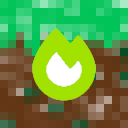Compatibility
Minecraft: Java Edition
Platforms
Supported environments
Creators
Details
Sodium Core Shader Support
Enables resourcepacks to replace sodium's shaders, similar to resourcepacks being able to replace vanilla's core shaders. If you like my mods consider supporting the development by buying me a coffee:
Documentation for Users
Sodium Core Shader Support allows resourcepacks to replace sodiums core shaders with their own. That does not mean, that
this mod makes every vanilla resourcepack work on sodium. The resourcepacks will only work if they specifically state, that
they are compatible with sodium core shader support.
If you are using a supported resourcepack you can simply activate it like any other resourcepack.
Resourcepack incompatible
Sodium may display the message The following resource packs are incompatible with Sodium in the top right corner after
reloading resources and listing your active core
shaders. This message will always appear, even if the resourcepack supports sodium core shaders and can be ignored.
List of Resourcepacks
This is a small list of resourcepacks that work on sodium. If you have created a resourcepack yourself feel free to open an issue on my github to add it to this list!
- Energy Shaders [Java]
- Night Vision Shaders [Java]
- Re-Shaded (since re-shaded v. 1.3)
Documentation for Shader Developers
It is important to understand that your vanilla shaders cannot just be copied to sodium shaders. Sodium has their own shaders for blocks and clouds:
- assets/sodium/shaders/
| - clouds.fsh
| - clouds.vsh
| - blocks/
| - block_layer_opaque.fsh
| - block_layer_opaque.vsh
| - include/
| - fog.glsl
| - chunk_material.glsl
| - chunk_matrices.glsl
| - chunk_vertex.glsl
Unless you want to change sodium clouds the block_layer_opaque are usually the most important ones.
You should not have to touch chunk_material.glsl, chunk_matrices.glsl and chunk_vertex.glsl unless you know what you
are doing.
Retrieving sodium shaders source code
To retrieve the sodium shader source code for a specific sodium version, download the .jar file of that version and
extract it like a .zip archive. Inside the extracted archive you will find a assets folder containing the directory
structure mentioned above.
block_layer_opaque
The block_layer_opaque is used for all blocks and block entities. The vanilla minecraft equivalent is terrain.fsh
and terrain.vsh (In older versions of minecraft the equivalent is rendertype_solid, rendertype_cutout, rendertype_cutout_mipped, ...).
Additionally, sodium core shader support adds a few defines in the sodium shaders block_layer_opaque.fsh
and block_layer_opaque.vsh for some terrain-types:
RENDER_PASS_SOLID: Solid BlocksRENDER_PASS_CUTOUT: Blocks like leaves, grass, glass, ...RENDER_PASS_TRANSLUCENT: Blocks with actual transparency, e.g. water, honey, slime, ...
Furthermore, the define SODIUM_CORE_SHADER_SUPPORT will be present in all shaders (mc >= 1.21.2 and version >= 1.3.8).
These defines can be used like this:
#ifdef RENDER_PASS_SOLID
// special shading for solid stuff
#endif
GameTime Uniform
As of Sodium Core Shader Support version 1.4.0 the u_GameTime uniform will be present in block_layer_opaque.fsh
and block_layer_opaque.vsh. It can be used just like the vanilla GameTime uniform. Add it to your shaders using:
uniform float u_GameTime;
How to specify which sodium versions are supported
The sodium devs will change their internal shaders and shader related code without further notice. That's why it is
important that you specify with which versions of sodium and minecraft your pack is compatible. This can be done in a special
versions.json file. It should be located in your resourcepack in a new directory assets/sodiumcoreshadersupport with
the file name versions.json inside. The contents of the file could look like this:
{
"supported-versions": {
"1.21": [ "0.5.11+mc1.21" ],
"1.21.1": [ "0.5.11+mc1.21" ]
}
}
In the above example the resourcepack states, that it is compatible with sodium 0.5.11 on minecraft 1.21 and 1.21.1.
An abstract description is below:
More specifically, versions.json must contain a question object with the key supported-versions.
The value of supported-versions must be a map, which maps different minecraft versions to an array of allowed sodium versions.
The SodiumCoreShaderSupport mod will check if the installed sodium version is contained in the array of the installed minecraft version.
- If the minecraft and/or sodium version is not inside
supported-versions, the pack can be activated with a warning message. - If the user does not have sodium installed the pack can be activated.
- If no versions.json is present, the pack can be activated with a warning message.
- If the versions.json is malformed, the pack can be activated with a warning message.
Imports
Sodium Shaders must be in assets/sodium/shaders directory. But you can #import files from
assets/minecraft/shaders using the #import directive. The following code will include
the file assets/minecraft/shaders/include/test.glsl:
#import <minecraft:include/test.glsl>
With this trick you can create custom glsl files, which you can #import in your shaders (in both core shaders and sodium shaders).
These files, should contain your main shader "logic". An example shaderpack, which
works with this trick on both vanilla and sodium, can be found here.









